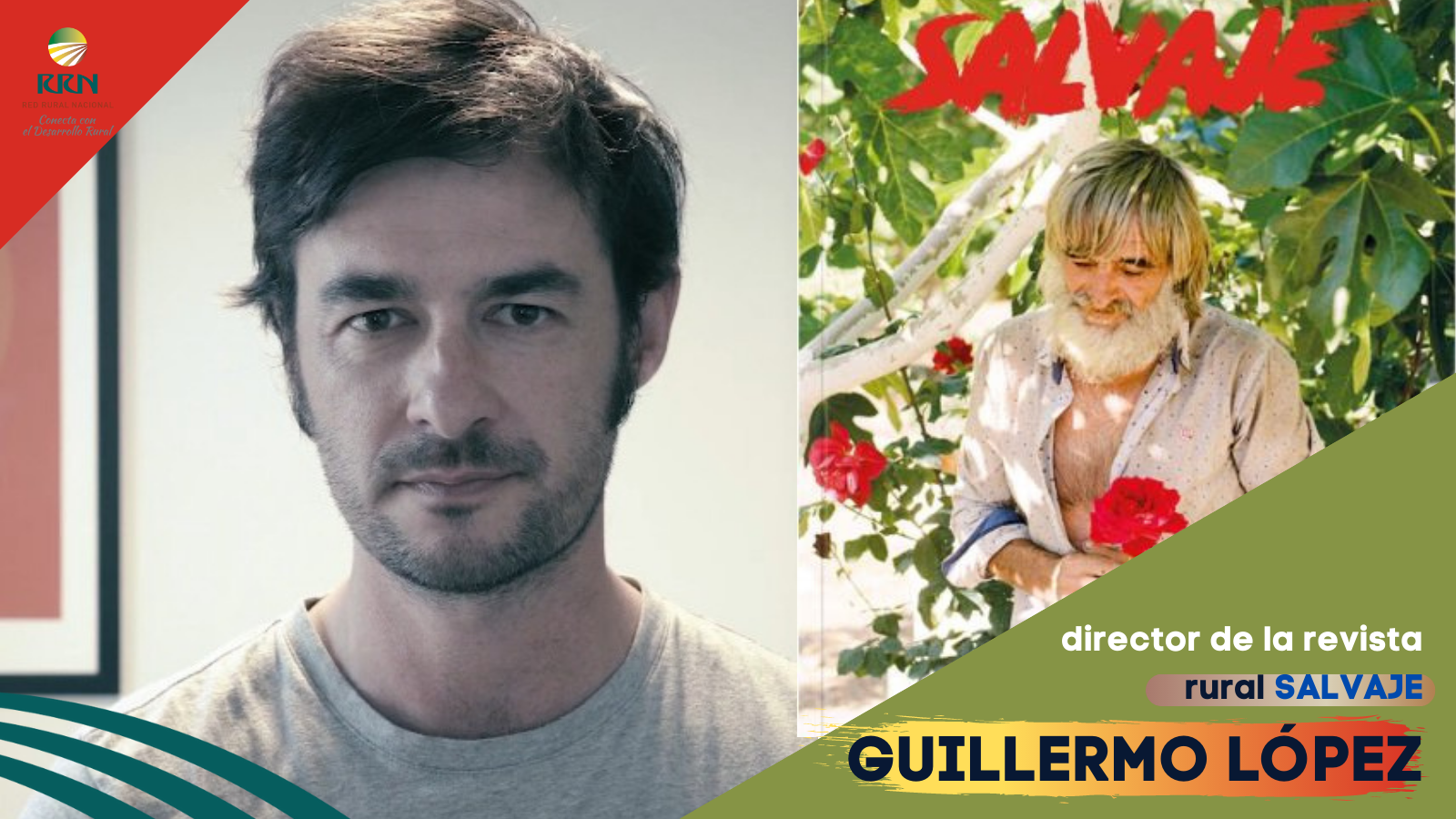
28 de September de 2021
September 23, 2021. “The magazine that wants to take you out into the countryside.” This is how wild “Salvaje” is, a quarterly magazine that has been running for two years (since July 2019) and seeks to offer a new perspective on the rural world. With an inductive approach—from the microscopic to the large—Salvaje showcases small but surprising stories that reveal new things and allow us to better understand our towns and rural environments.
- Guillermo López, director of the magazine "Salvaje", talks with the RRN about the pandemic, rural youth, rural projects, teleworking, crowdfunding, and the new way of relating to rural areas.
Salvaje , which was born thanks to a crowdfunding project or collaborative social economy, currently has 2,500 subscribers and faces its third year of life with the challenge of continuing to expand its readership, while recovering the advertising lost during the pandemic.
National Rural Network: Is there life beyond the city?
Guillermo López: Yes, and also different . What characterizes rural areas is the variety of different life projects you can embrace and undertake. The countryside is a blank slate where you can always start from scratch to find your own lifestyle. In the city, however, the paths are more well-trodden, and it's very difficult to differentiate yourself.
RRN: The collaborative economy is opening up new opportunities: crowdfunding, digital nomads, rural coliving and coworking... Do you think there's a new market niche for the rural world?
GL: Yes, in fact, Salvaje magazine was born precisely thanks to crowdfunding or sponsorship. It's necessary to find new formulas for socioeconomic organization and associationism , above all. These new models are just the tip of the iceberg, but they're necessary to restore the primary sector's original strength. Imagination is needed to create new things that empower rural areas to be strong.
RRN: Do you think the pandemic has given new life to rural areas? Are people considering returning to the villages and countryside again?
GL: The pandemic hasn't lasted long enough for a new model of relations between rural and urban areas to take hold. It hasn't allowed time for a change in mentality. And if it has, it's not being noticeable. But it has managed to highlight the possibility that change is possible. I think the idea that our overall quality of life can be improved has taken hold. But it hasn't materialized yet.
RRN: What challenges does a small business dedicated to the rural world, in this case, a magazine, face today?
GL: In our case, it's economic survival. We're very satisfied with our 2,500 subscribers in two years of existence, but we need advertising revenue to make the business profitable. And advertising vanished during the pandemic. So we hope that, with this return to the way things used to be, that part of it will recover. I think we've achieved other important challenges, such as finding our own voice and unique themes . We have our own point of view and a recognizable voice.
RRN: What does the rural environment currently need to occupy a prominent place?
GL: Get rid of your complexes and believe in yourself. You have to change the current mentality and become aware of your power. Once that's done, you have to organize well to gain greater strength and presence. We need even more associations to demand and enforce their rights and exert pressure on their interests.
RRN: Is teleworking here to stay? Does it represent a way to repopulate rural areas?
GL: It's made headlines, but it's fading. Furthermore, rural areas not only need digital connectivity, but above all, access to basic services. The foundation of rural areas is the primary sector, not the service sector. A worker who moves to a village to work, beyond the consumption of housing and basic goods, doesn't have a major economic impact on the sector on which the rural world does depend: agriculture and livestock.
RRN: Finally, what advice would you give to young people in rural areas?
GL: They must be aware that without them there is no future and that they live in an environment with enormous potential . They must take the reins and become protagonists of their own world for the coming decades.











